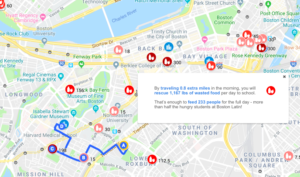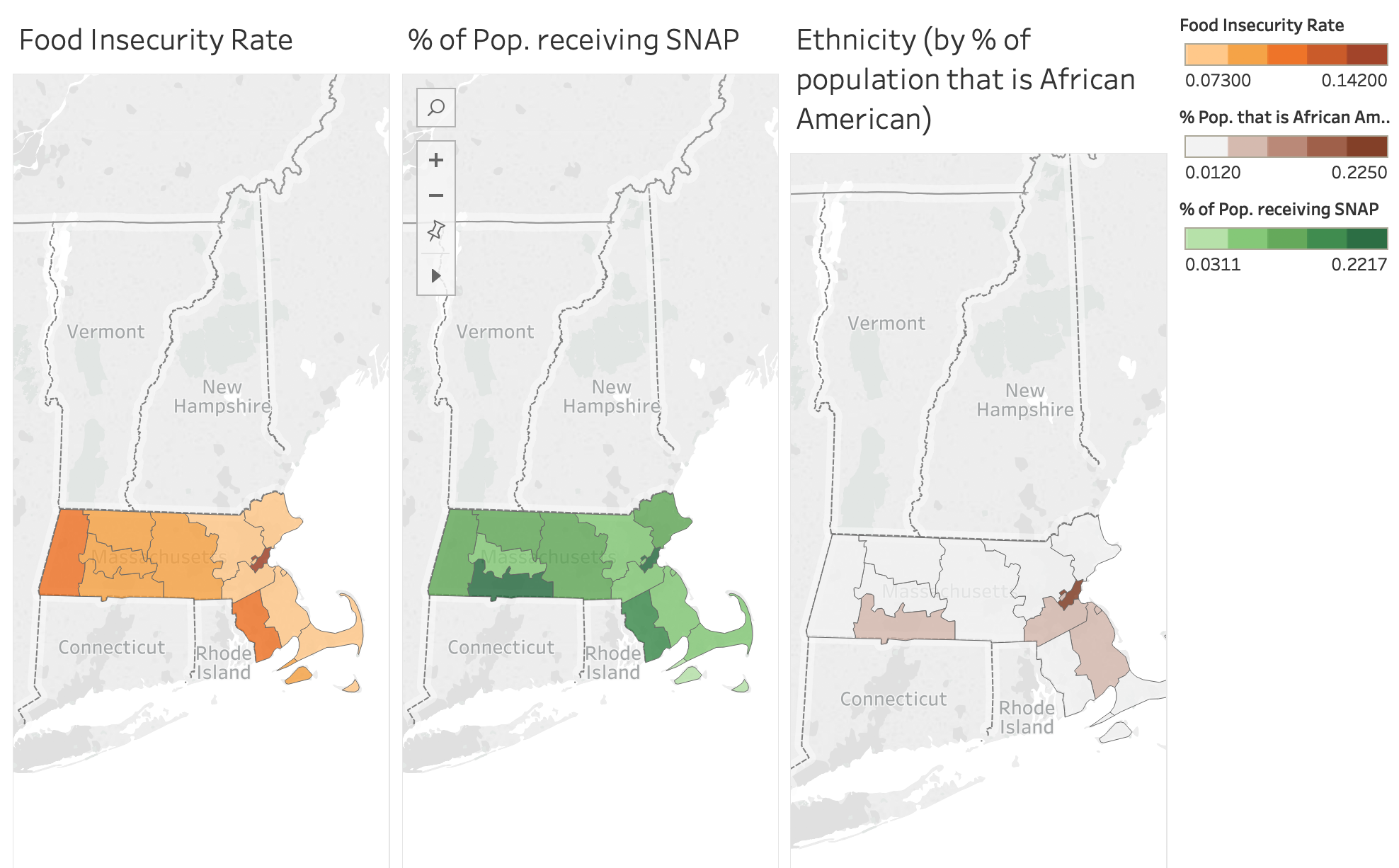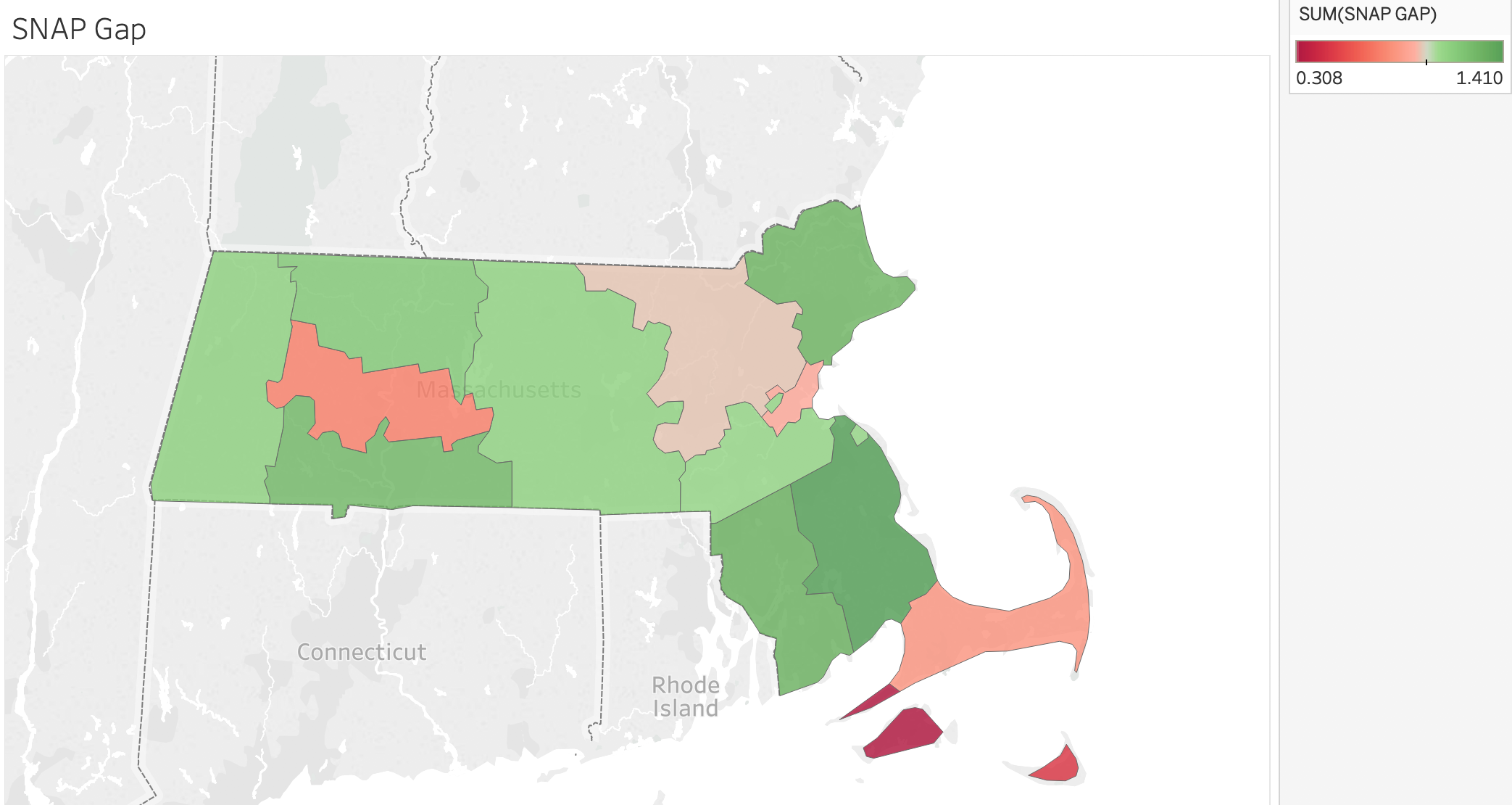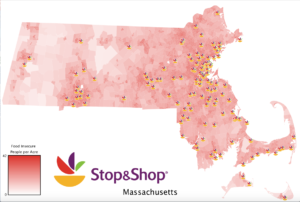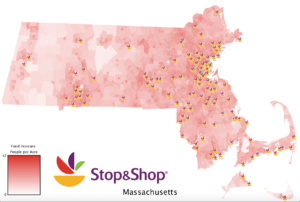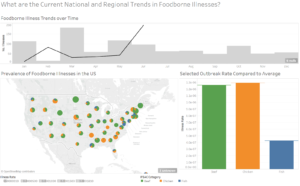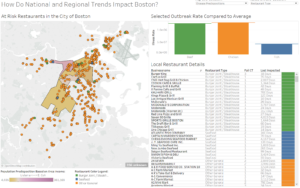Team: Rubez Chong, Melinda Salaman, Viki Silva, Sarah Von Anh
Our Data
Our team decided to use the CDC online database that shares the data on foodborne outbreaks that result in illnesses, hospitalizations, and death in the United States. We wanted to build an informative map aimed at travelers from outside the U.S. who are embarking on a cross-country road trip for the first time. We wanted to tell this story because it brings the data points to life, and makes it feel relevant to the user – as they are excited about a first-time trip, they can also keep precautions in mind to fully enjoy the journey without falling prey to foodborne illness or worse.
Our Audience
We are assuming the role of an international organization like the Rotary Club that sends groups of high school students each year to the U.S. for a few weeks in the summer. Our primary audience for this presentation are the planners and chaperones of these student trips: teachers, parents, and other adults are in charge of keeping groups of high school students safe during their travels. While the chaperones ultimately have final say on the restaurants and eating establishments they take their student groups to, we as members of the sponsor organization want to be sure that all students return home healthy. With that in mind, we are concerned about foodborne illnesses and infectious diseases.
Our goal is to educate chaperones, warn them of potential dangers, and present them with practical, actionable advice on how to keep their student groups healthy.
Our Approach
We wanted to use the map of the United States in a creative and purposeful way. After brainstorming common cases where a map is necessary, interesting, and additive, we ultimately settled on a road trip, where one needs driving directions to get from point A to point B. With that in mind, we researched popular road trips across the U.S. and found resources with routes that transversed multiple states. It goes without saying that there are many, many options; we decided to focus on “The Road to Nowhere”, a route that goes through the midwest from North Dakota to Texas as an example for this sketch.
More than just driving directions, we also wanted to use this map as a field guide for chaperones: we would highlight points of interest they are visiting along the route and the associated health hazards and recommendations we have related to each stop.
After checking in with Rahul during the last class working session, we decided to create an interactive slide deck instead of a dashboard/map. We made this decision after considering what was the best format for our audience. Bearing in mind the amount of content we thought necessary for chaperones to see and digest, we decided it was too much information to put into a dashboard. On the other hand, a slide deck is easily usable by teachers and chaperones of all levels of comfort with technology, can be easily disseminated via email or in print, and is a medium that our audience is comfortable and familiar with.
APPENDIX
Close-Up on “The Road to Nowhere”
Stop #1: Knife River Indian Villages (ND): Person-to-person; The Knife River Indian Villages National Historic Site, which was established in 1974, preserves the historic and archaeological remnants of bands of Hidatsa, Northern Plains Indians. This area was a major trading and agricultural area. Three villages were known to occupy the Knife area.
Stop #2: Sitting Bull Memorial (SD): Food; The Sitting Bull Monument is located about seven miles southwest of Mobridge. Chief Sitting Bull, or Tatanka Iyotake, was a Hunkpapa Teton Sioux spiritual leader. In the 1870s, Sitting Bull had relocated to the Standing Rock Indian Reservation near the Grand River in present day Corson County.
Stop #3: Buffalo Bill Rodeo (NE): Person-to-person; The Nebraskaland Days Buffalo Bill Rodeo will be held on Wednesday, June 12th – Saturday, June 15th, 2019 in North Platte, Nebraska. This North Platte rodeo is held at Wild West ARena and hosted by Beutler & Son Rodeo Co.
Stop #4: OzFest (Liberal, KS): Person-to-person / Food; Come celebrate the Anniversary of the movie “The Wizard of Oz” at Dorothy’s House and the Land of Oz. The day will include live entertainment, games, costume contests, food and fun!
Stop #5: Remember the Alamo! (TX): Person-to-person; The Alamo Mission in San Antonio, commonly called The Alamo and originally known as the Misión San Antonio de Valero, is a historic Spanish mission and fortress compound founded in the 18th century by Roman Catholic missionaries in what is now San Antonio, Texas, United States.
Stop #6: South Padre Island (TX): Person-to-person; South Padre Island is a resort town on a barrier island of the same name, off the southern coast of Texas. It’s known for its beaches and calm waters. South Padre Island Birding and Nature Center is home to a 5-story watchtower with views of migrating birds. The South Padre Island Dolphin Research & Sealife Nature Center offers boat tours and touch tanks. Sea turtles are rescued and rehabilitated at Sea Turtle Inc.


